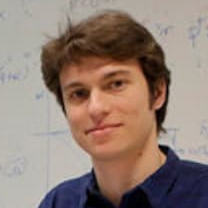Computational and Theoretical Insights into Superconductors Advancements
A special issue of Crystals (ISSN 2073-4352). This special issue belongs to the section "Inorganic Crystalline Materials".
Deadline for manuscript submissions: 16 August 2024 | Viewed by 124
Special Issue Editors
Interests: strong correlation matter; electron–phonon interaction; crystal structure prediction; superconductivity; quantum physics and chemistry
Interests: electron–phonon interaction ; anharmonicity; quantum nuclear effects; machine learning; superconductivity; hydrides
Interests: first principles calculations; electronic structure, density functional theory; crystal structure prediction; high pressure chemistry; superconductivity; superhard materials; catalysis; self-assembly; low-dimensional systems
Special Issue Information
Dear Colleagues,
The phenomenon of superconductivity has the yet-untapped potential to revolutionize advancements in medicine, energy storage, transportation, and quantum computing. The well-understood mechanism of conventional BCS superconductivity has paved the way for theoretical predictions, computational methods, data science, and artificial intelligence (AI) to play a crucial role in advancing the field. Concurrently, the experimental confirmation of higher-temperature superconductivity has marked a transformative moment in the field, stimulating further theoretical studies. Advanced computational methods, including crystal structure prediction, have become powerful tools for efficient material design, enabling the exploration of different crystal structures and compositions. Additionally, the development of novel theoretical infrastructure has enhanced the speed and accuracy of predicting superconducting critical temperatures. Such methods facilitate the exploration of a broader range of chemical components, the investigation of quantum anharmonic effects, and the analysis of structural engineering factors such as strain–stress relationships and low-dimensional materials, thereby enabling the prediction of potential superconductors with desirable properties, empowering the discovery of novel materials. The present Special Issue on "Computational and Theoretical Insights into Superconductor Advancements" serves as a comprehensive report summarizing the tools and theories that currently define the field, and the recent progress that has been made therein, encouraging further studies in this area.
Dr. Xiaoyu Wang
Dr. Francesco Belli
Prof. Dr. Eva Zurek
Guest Editors
Manuscript Submission Information
Manuscripts should be submitted online at www.mdpi.com by registering and logging in to this website. Once you are registered, click here to go to the submission form. Manuscripts can be submitted until the deadline. All submissions that pass pre-check are peer-reviewed. Accepted papers will be published continuously in the journal (as soon as accepted) and will be listed together on the special issue website. Research articles, review articles as well as short communications are invited. For planned papers, a title and short abstract (about 100 words) can be sent to the Editorial Office for announcement on this website.
Submitted manuscripts should not have been published previously, nor be under consideration for publication elsewhere (except conference proceedings papers). All manuscripts are thoroughly refereed through a single-blind peer-review process. A guide for authors and other relevant information for submission of manuscripts is available on the Instructions for Authors page. Crystals is an international peer-reviewed open access monthly journal published by MDPI.
Please visit the Instructions for Authors page before submitting a manuscript. The Article Processing Charge (APC) for publication in this open access journal is 2600 CHF (Swiss Francs). Submitted papers should be well formatted and use good English. Authors may use MDPI's English editing service prior to publication or during author revisions.
Keywords
- superconductor
- electron–phonon interaction
- crystal structure prediction
- quantum anharmonic effect
- superconductivity
- machine learning
- material discovery







